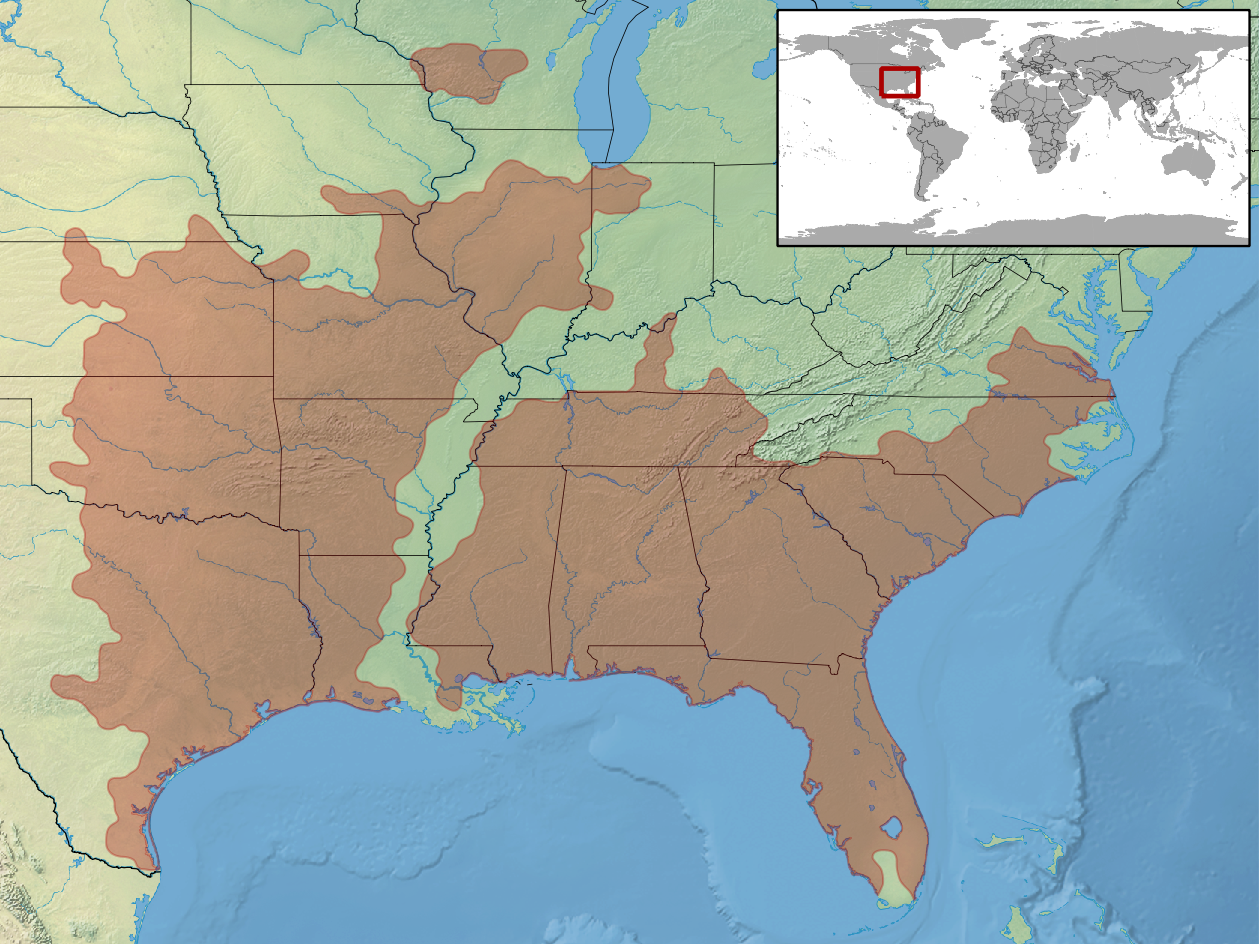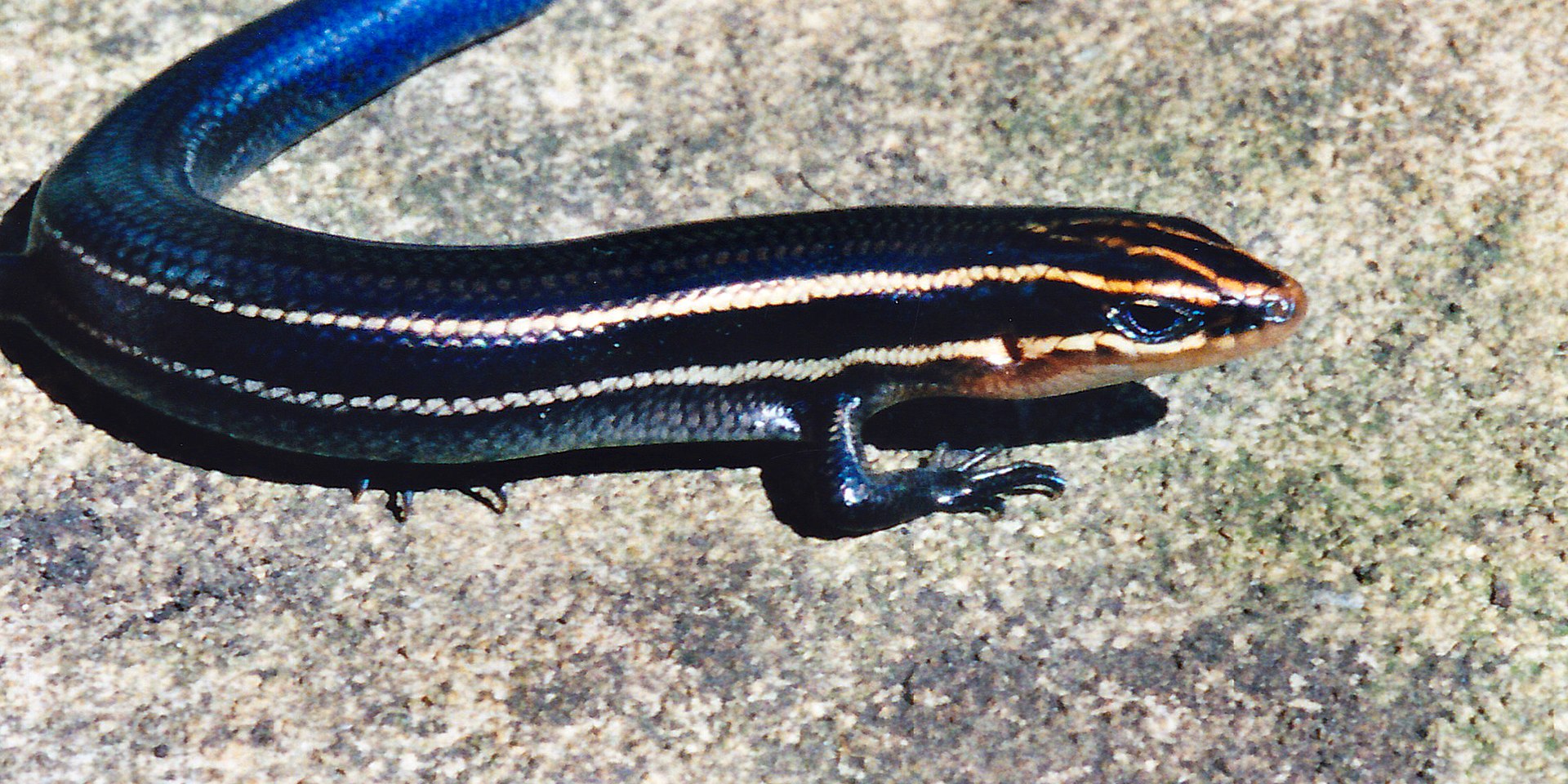There are ten lizards you will see when exploring Houston. Maybe your cat has delivered you a lizard as a gift or your child has caught one in the yard. The lizards you find in Houston are not dangerous, they are not poisonous or venomous.
Continue reading below for complete details on the common lizards you can find in Houston.
Are Lizards In Houston Poisonous?
While Houston is home to many venomous snakes, there are no venomous lizards. The only venomous lizards are the Gila monster and the Mexican beaded lizard, neither of which are common to Houston.
The ten common lizards in Houston are relatively harmless and will try and run away if they feel threatened, rather than attacking. They may bite if captured, though seldom break the skin.
Lizards In Houston
1. Brown Anole

Scientific name: Anolis Sagrei.
Common name: Brown anole lizard, Cuban brown anole, De la Sagra’s anole.
The brown anole (Anolis sagrei) is brown to gray lizards, with white or yellow patterns on their back growing up to 8.5 inches (21cm). Males often have orange or red throat fans with a white edge.
The brown anole was introduced from the Carri bean years ago and has expanded into the United States.
They don’t spend much time in trees and are often found on the ground among low vegetation. They can be found in suburban and urban areas.
These lizards are active during the day, basking in vegetation. During cooler weather, you will find them hiding in rotten logs, under tree bark, and even in shingles.
2. Green Anole

Scientific name: Anolis carolinensis.
Common name: Green anole, Carolina anole, Carolina green anole, American anole, American green anole, North American green anole, red-throated anole, American chameleon.
The green anole is very similar to the brown anole, except for its green coloration and a longer snout. These lizards live mostly in trees, hiding in the shade of the branches. They can also be seen in tall grass.
They are very common in Houston, both in the suburban and urban areas, often found near homes on fence posts and on the side of buildings.
These lizards grow to around 8cm with females being smaller than the males. Both males and females have long tails that are half their total body length.
These anoles range in color from green to gray and even brown, or a combination of the three.
They change their scale color based on their environment, usually as a result of temperature or increased activity.If they are dark brown or black in color, then they are stressed or cold.
Males have a pink dewlap, which is used as a competitive status, usually related to territorial disputes.
Related – How to tell if a green anole is male or female.
3. Mediterranean House Gecko

Scientific name: Hemidactylus turcicus.
Common name: Mediterranean house gecko.
The Mediterranean house gecko can grow up to 15cm and live for up to 8 years.
These small lizards are native to the Mediterranean but have been introduced to many countries around the world.
They are nocturnal lizards with large eyes, tan-colored skin with black spots and stripes on their tails. Their belly is almost translucent.
These geckos usually group together as a group of two to five geckos. During the day they hid, sometimes basking in the sun. Males are very territorial and will defend their territory.
4. Little Brown Skink

Scientific name: Scincella lateralis.
Common name: Little brown skink, ground skink.
The little brown skink is small in size with smooth scales that overlap, small limbs, and transparent discs on the eyelids.
Their body color can be brown, tan, or gray with a single dark brown or black stripe on each side which extends from the snot to part of the tail. The stripe is bordered by a tan or yellow stripe, starting from behind the eye.

These small lizards are between 3 to 5 inches in length and can be found throughout North America. They are completely harmless and will try and escape if confronted.
5. Broad-headed Skink

Scientific name: Plestiodon laticeps.
Common name: Broad-headed skink, broadhead skink.
The broad-headed skink grows up to thirteen inches (33cm) and is one of the largest skinks.
They are large lizards with a streamlined body and short legs. Their bodies tend to be brown, gray, or back with white to yellow stripes. Their stripes also run two on either side and done down the back.
Adults do fade to a gray or brown with males developing a large orange head with very powerful jaws. Young brocaded-headed skinks have bright blue tails with prominent stripes.
The males are easily identifiable, but the females are harder to distinguish, as they have a similar appearance to the five-lined skinks.
They can be identified by their scales, as broad-headed skinks have a row of scales under the tail, which are enlarged, with five labial scales, which are found along the upper lip and between the nose and eyes.

These lizards prefer wood areas and are often seen in oak trees. They live on the ground and in trees, with the males being more arboreal (tree-dwelling). Adults can be seen sunning on branches in the trees, while younger lizards are found under fallen trees on the ground.
They will break their tails if they are captured or pursued, putting their predator off and allowing them to escape.
6. Slender Glass Lizard

Scientific name: Ophisaurus attenuatus.
Common name: Slender glass lizard.
The slender glass lizards look almost like a snake. They can grow up to 42 inches (107cm) in total length. These lizards are slender, long, and legless. Unlike snakes, they have movable eyelids, inflexible jaws, and external ear openings.
The slender glass lizards are more slender than the Eastern glass lizard, though both are the same color, which is yellow to brown.
What distinguishes this glass lizard from the others is that they have dark markings, which can be found under the lateral groove. Many also have a dark stripe down their backs.

These lizards prefer dry habitats, often seen in sandy habitats and old fields.
These lizards are active in daylight, where they can be found under debris. They will break off their tails, which will regrow, to distract any predators.
7. Texas Spiny Lizard

Scientific name: Sceloporus olivaceus.
Common name: Texas spiny lizard.
The Texas spiny lizard is native to the states of Texas and is often seen in trees or on fences.
The adults can grow up to 7 inches (28cm) and are gray in color with white, black, or red blotches down their backs.
Patterns vary based on location, but the colors and patterns help the lizard to camouflage itself when hiding against tree bark.
Their underside is light gray with males having blue patches on the sides of their tummies. They have spiny scales, long toes, and claws that help them climb.
These lizards are arboreal and prefer habitats with trees and lots of leaf litter on the ground. They are found in suburban areas, where they can be seen basking in the sun on telephone poles and fences.
They are nervous and shy and will run if approached.
8. Four-lined Skink

Scientific name: Plestiodon tetragrammus.
Common name: four-lined skink.
The four-lined skink (Plestiodon tetragrammus) is endemic to North America. This medium-sized lizard can be distinguished by its stripes and coloration.
They are light brown or gray in color with light stripes that run from the eye to past the forelegs. Juveniles display a bright blue tail, which fades as they age.

Adults grow to around three inches (7.5cm) from snout to vent and 7.1 inches (18cm) in total length. These skinks prefer wooded areas.
9. Common Five-lined Skink

Scientific name: Plestiodon fasciatus.
Common name: American five-lined skink, common five-lined skink.
The common five-lined skin grows to around 8.5 inches (21.5cm) in total length.
These are large lizards with short legs and streamlined bodies. They are usually brown, gray or black in color with five white, or yellow stripes. The stripes are placed two on each side of the body and one down the center of the back.
Juveniles have bright blue tails, while the males often lose their stripes, developing an orange or red coloration on their heads.
These skinks are not easy to distinguish against the broad-headed skink or other five-lined skins. The only distinguishing feature is that these lizards have a row of scales under their tail that is enlarged.

These lizards are common in woodland areas where there are fallen trees and tree stumps, giving them plenty of places to hide. These lizards live on the ground and in trees. You will often find them under a log.
If you try and capture one, it will run to the nearest log or tree. They are not easy to capture. They will also break their tail to escape.
10. Six-lined Racerunner

Scientific name: Aspidoscelis Sexlineatus.
Common name: Six-lined racerunner.
The six-lined racerunner (Aspidoscelis sexlineatus) grows to 9.5 inches (24cm). These lizards have six white to yellow stripes down their backs.
They live on the ground and can run at fast speeds. They love warm areas, such as woodlands, sand dunes, and fields. These lizards love the warmth and are active even on the hottest days in summer.
They are active and alert and can be seen running between vegetation. Racerunners hide in burrows to escape predators or when the weather is cool.